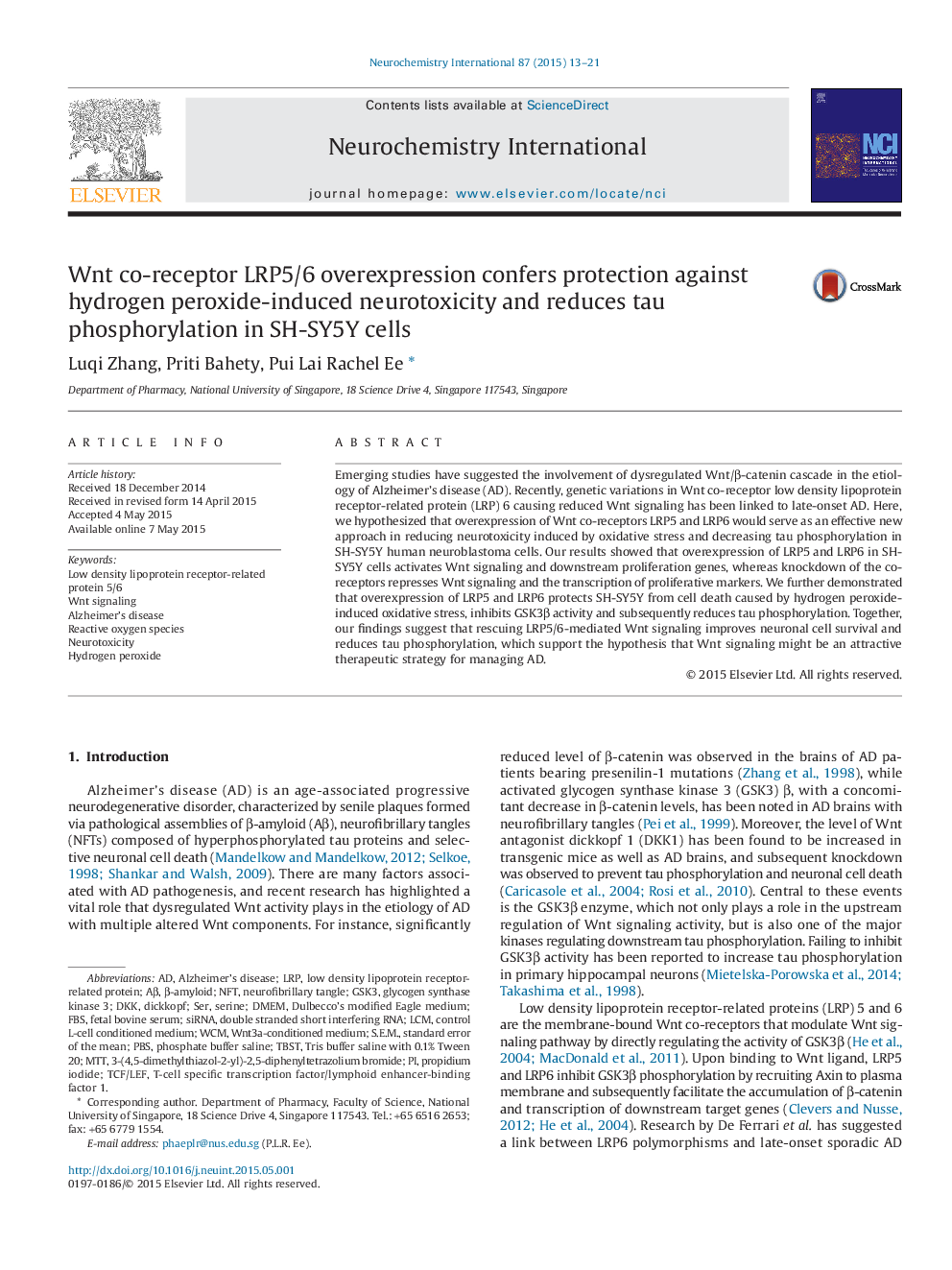| Article ID | Journal | Published Year | Pages | File Type |
|---|---|---|---|---|
| 2200419 | Neurochemistry International | 2015 | 9 Pages |
•LRP5 and LRP6 overexpression upregulates Wnt/β-catenin signaling and downstream proliferative genes.•Silencing of endogenous LRP5 and LRP6 downregulates Wnt signaling activities and target genes.•LRP5 and LRP6 overexpression rescues SH-SY5Y cells from neurotoxicity caused by hydrogen peroxide-induced oxidative stress.•LRP5 and LRP6 overexpression inhibits GSK3β activity and reduces tau phosphorylation.
Emerging studies have suggested the involvement of dysregulated Wnt/β-catenin cascade in the etiology of Alzheimer's disease (AD). Recently, genetic variations in Wnt co-receptor low density lipoprotein receptor-related protein (LRP) 6 causing reduced Wnt signaling has been linked to late-onset AD. Here, we hypothesized that overexpression of Wnt co-receptors LRP5 and LRP6 would serve as an effective new approach in reducing neurotoxicity induced by oxidative stress and decreasing tau phosphorylation in SH-SY5Y human neuroblastoma cells. Our results showed that overexpression of LRP5 and LRP6 in SH-SY5Y cells activates Wnt signaling and downstream proliferation genes, whereas knockdown of the co-receptors represses Wnt signaling and the transcription of proliferative markers. We further demonstrated that overexpression of LRP5 and LRP6 protects SH-SY5Y from cell death caused by hydrogen peroxide-induced oxidative stress, inhibits GSK3β activity and subsequently reduces tau phosphorylation. Together, our findings suggest that rescuing LRP5/6-mediated Wnt signaling improves neuronal cell survival and reduces tau phosphorylation, which support the hypothesis that Wnt signaling might be an attractive therapeutic strategy for managing AD.
